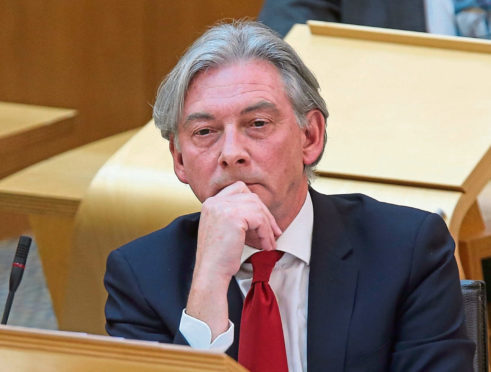
With a global pandemic threatening our existence, the economy in meltdown and a population in the grip of fear, there was a welcome cessation in Punch and Judy party politics.
But, with eight months to go before the next election, and an SNP Programme For Government that includes a second independence referendum, the gloves are now off.
And the Scottish Labour Party responds to another looming humiliation at the polls by doing what it always does – fighting with itself.
The rerun of this classic comedy, even managed a new punchline last week with the intervention of a group of unelected peers calling for the elected leader of their party to stand down in the interests of democracy.
The demise of Scottish Labour’s hegemony is one of the most surreal events of Scotland’s recent political history and one that even we in the political bubble struggle to fully comprehend.
In 1999, Scottish Labour had more than 100 elected members in Westminster, Holyrood and Brussels combined. The party dominated local government, controlled most of the councils and, in one way or another, was writ large across our public sector. Being Scottish was being on the left, and being Labour was largely the norm.
You could joke that Labour votes needed to be weighed, not counted.
Today, Scottish Labour is a poor excuse for a party that was once a titan. It has one MP and just 23 MSPs. It sits in third place behind the Tories in a Scottish Parliament that it created. And its leadership contests are an almost biennial [non] event.
Richard Leonard is the ninth leader of Scottish Labour in 20 years. And while he can now claim to be one of its longest-serving leaders, with a tenure lasting less than three years, the killing off of his party’s popularity is not down to him.
But, with opinion polls showing Labour on just 14% and Leonard’s biggest sin not being recognised, what does the party do? Declare war, again, on its leader and, thus, focus attention on why Labour is all but a spent force.
I’ve lost count of the Labour big-hitters who have cornered me at conference over the years to tell me I had it all wrong. And, ironically, accused me of being blinkered when I talked of the quiet rise of the SNP. The MPs and MSPs who would tell me the electorate had it wrong. That the SNP was hoodwinking Scots and that things would come right for them again.
They were wrong.
Each new party leader was as bad as the last in terms of taking the constitutional temperature and addressing what needed to be done in turning the party’s fortunes around. And now, in Labour’s never-ending game of leadership musical chairs, Leonard is simply taking his turn.
Nicola Sturgeon has said this coming election is the most important in Scotland’s history, a choice between the “progressive policy platform offered by the SNP and the utterly regressive agenda of the Conservatives”.
She has framed it as an election about independence and, for a Scottish Labour Party that continues to oppose a second independence referendum and consumes itself in self-interest and a belief the answer to its problems lies in a change of leader, this election could be its last.

Enjoy the convenience of having The Sunday Post delivered as a digital ePaper straight to your smartphone, tablet or computer.
Subscribe for only £5.49 a month and enjoy all the benefits of the printed paper as a digital replica.
Subscribe